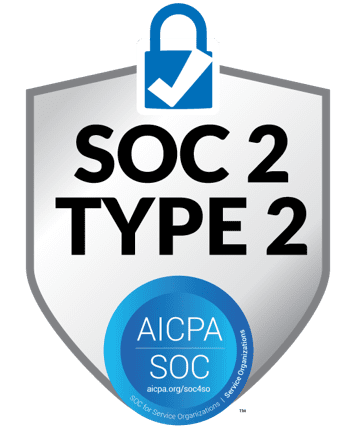Big tech companies are quietly building their competitive advantage using your most sensitive business documents and personal files.
While you upload, share, and store information through their platforms, these AI giants are extracting valuable insights from your data to improve their own products and services.

The reality is that most AI companies can legally access and use your private documents for training their systems, even when you think your information is secure.
This happens through cloud storage services, productivity tools, and AI assistants that you use every day.
The data you consider confidential becomes part of their growing knowledge base.
Understanding how this process works will help you make better decisions about your digital privacy.
The methods these companies use to access your information, the privacy implications you face, and the power dynamics at play all affect how safely you can use modern technology tools without compromising your most important data.
The Competitive Edge: How AI Giants Exploit Private Documents

Major technology companies extract valuable insights from private documents to build superior AI systems and maintain market dominance.
These companies use sophisticated artificial intelligence tools to process confidential business data and create competitive advantages that smaller competitors cannot match.
Artificial Intelligence and Proprietary Data Utilization
Tech giants collect your private documents through cloud storage services, email platforms, and business software.
Your contracts, financial records, and internal communications become training data for their AI models.
Companies like Google and Microsoft access documents stored in their cloud platforms.
They analyze patterns in your business communications and file structures.
This data helps them understand how different industries operate.
The AI systems learn from millions of private documents across various sectors.
Your confidential information contributes to algorithms that can predict market trends and business behaviors.
Key data sources include:
- Email attachments and correspondence
- Cloud-stored business documents
- Collaborative workspace files
- Uploaded presentations and reports
These companies often update their terms of service to expand data usage rights.
You may not realize your private documents are being processed for AI development.
Business Intelligence From Confidential Documents
Your private business documents reveal competitive strategies, pricing models, and operational processes.
Tech giants harvest this data to fuel their AI ambitions while building comprehensive industry intelligence.
AI systems analyze your confidential contracts to understand standard pricing structures.
They examine your internal reports to identify successful business practices.
Your strategic planning documents help these companies predict industry movements.
The extracted intelligence creates unfair advantages in multiple ways:
| Intelligence Type | How It’s Used | Your Impact |
|---|---|---|
| Pricing Data | Market analysis tools | Competitors know your rates |
| Strategy Documents | Predictive algorithms | Business plans become public knowledge |
| Financial Records | Risk assessment models | Credit and investment decisions affected |
Large technology firms use this intelligence to improve their own business services.
They develop AI tools that compete directly with your industry while using your own data against you.
AI Tools and Advanced Document Analysis
Advanced artificial intelligence processes your documents using natural language processing and machine learning algorithms.
These ai tools extract specific business insights that would take human analysts months to discover.
Document analysis AI identifies key phrases, financial figures, and strategic decisions in your files.
The technology recognizes patterns across thousands of similar documents from other companies.
Your proprietary information becomes part of larger datasets.
Modern AI tools can:
- Extract financial data from complex spreadsheets
- Summarize lengthy legal agreements
- Identify competitive advantages in business plans
- Analyze customer communication patterns
The processed information feeds into recommendation engines and business intelligence platforms.
Your private document insights help these companies build products that directly compete with your services.
Some platforms offer AI document processing solutions that promise efficiency gains.
The same technology that processes your documents also learns from their content for broader commercial purposes.
Methods of Data Access and Extraction
AI companies use three main approaches to gather your private documents: direct collection through their platforms, processing unstructured content you upload, and forming partnerships with organizations that already have access to your data.
Data Collection Techniques Used by AI Giants
AI companies collect your documents through several direct methods.
When you upload files to their platforms, they gain immediate access to your content.
Cloud-based services represent the most common collection method.
You upload documents to train AI models or get help with analysis.
These platforms store copies of your files on their servers.
API integrations let AI tools connect directly to your existing software.
This gives them access to documents in your email, cloud storage, and business applications.
Browser extensions and desktop applications can scan documents on your computer.
They often request permission to access files across multiple folders and applications.
Some AI companies use web scraping techniques to gather publicly available documents.
They collect information from websites, forums, and databases that contain your shared content.
Mobile apps represent another collection point.
When you photograph documents or upload files through smartphone applications, AI companies gain access to this visual data.
Leveraging Unstructured and Sensitive Content
AI data extraction tools excel at processing unstructured documents that contain your most sensitive information.
These systems understand meaning and context, not just document format.
Financial records like bank statements and tax documents contain valuable personal data.
AI systems can extract account numbers, transaction patterns, and income details from these files.
Medical records provide health information that AI companies can analyze.
These documents often include diagnoses, treatment plans, and personal health histories.
Legal contracts contain business strategies and personal agreements.
Generative AI systems can now process complex legal language that traditional tools struggled with.
Email communications reveal personal relationships and business dealings.
AI tools scan through years of correspondence to understand your communication patterns.
The technology has improved significantly.
Document extraction AI can now handle mixed content including text, tables, and images from invoices, contracts, and PDFs.
Global Deals and Partnerships for Data Acquisition
AI giants form strategic partnerships to access your documents without direct collection.
These deals give them massive datasets from organizations you already trust with your information.
Healthcare partnerships provide access to patient records and medical research.
AI companies partner with hospitals and insurance providers to analyze health documents.
Financial institution deals grant access to banking records and loan applications.
These partnerships help AI companies understand spending patterns and financial behaviors.
Government contracts allow access to public records and administrative documents.
AI tools process tax filings, property records, and legal documents through these agreements.
Enterprise software partnerships connect AI systems to business applications.
Companies that use accounting software or document management systems may unknowingly share data through these integrations.
Academic collaborations provide research data and student information.
Universities often share anonymized documents for AI training purposes.
These partnerships often include data-sharing clauses that users don’t fully understand.
Your documents become training material for AI models through these indirect access methods.
Implications for Data Privacy and Security
AI companies face mounting regulatory pressure while handling massive amounts of personal data, creating complex compliance scenarios across different countries.
Data breaches and unauthorized access to personal information pose significant risks when your documents are processed by AI systems.
GDPR Compliance and Cross-Border Challenges
The General Data Protection Regulation creates strict requirements for how AI companies handle your personal data.
When you upload documents to AI platforms, companies must obtain clear consent and explain how they process your information.
Key GDPR Requirements:
- Explicit consent for data processing
- Right to data deletion upon request
- Data minimization principles
- Transparent privacy policies
Cross-border data transfers complicate compliance efforts significantly.
Your data might move between servers in different countries, each with varying privacy laws.
AI companies often struggle with cross-border data flows when training models.
European data cannot freely transfer to countries without adequate protection levels.
Many AI platforms implement Standard Contractual Clauses to enable legal data transfers.
However, enforcement varies widely between jurisdictions.
Risks of Data Breaches and Exposure
The collection, processing, and storage of personal data in AI algorithms creates multiple vulnerability points where your information could be compromised.
AI systems process enormous datasets that often contain sensitive personal information.
Common breach scenarios include:
- Server infiltrations exposing training data
- Inadvertent data leaks through model outputs
- Third-party vendor security failures
- Internal employee data misuse
The sheer volume of information in AI systems amplifies potential damage from breaches.
Terabytes of personal documents create attractive targets for cybercriminals.
Your uploaded documents may inadvertently appear in AI responses to other users.
This happens when models memorize training data rather than learning general patterns.
Some AI companies lack adequate security measures for data storage.
Encryption, access controls, and monitoring systems vary significantly between providers.
Data Governance and Power Dynamics
AI companies use sophisticated data governance frameworks to maximize control over user information while governments struggle with digital sovereignty issues that create global power imbalances.
Corporate Data Governance Strategies
Tech giants build data governance structures that prioritize their business interests over user privacy.
They create policies that appear protective but actually expand data collection rights.
Key Corporate Tactics:
- Legal Language Manipulation: Companies use complex terms of service that users rarely understand
- Opt-out Barriers: They make data sharing the default while hiding privacy controls in deep menu systems
- Cross-Platform Integration: Your data gets shared between multiple services under one corporate umbrella
These companies implement AI-powered governance systems that automatically categorize and process your personal information.
The systems identify valuable data patterns without human oversight.
Your private documents become training data through automated processes.
Companies scan emails, photos, and documents to improve their AI models while claiming this serves “product enhancement.”
Data Sovereignty and Global Inequity
Wealthy nations and tech corporations control global data flows while developing countries lose access to their citizens’ information.
This creates digital colonialism where your data generates profits elsewhere.
Global Power Imbalances:
| Powerful Entities | Disadvantaged Groups |
|---|---|
| US tech companies | Developing nations |
| European regulators | Individual users |
| Chinese tech giants | Small businesses |
Data governance policies vary dramatically between countries.
Strong privacy laws in Europe don’t protect users in countries with weaker regulations.
Your location determines your data rights.
Companies route your information through countries with favorable laws to avoid strict privacy protections.
Tech giants influence government policies through lobbying and economic pressure.
They shape regulations that appear consumer-friendly but contain loopholes for continued data harvesting.
Mitigating Risks and Building Trust
Organizations can protect sensitive documents through proven strategies like data anonymization and secure workflows.
The shift toward private AI systems and emerging regulations will reshape how companies handle confidential information.
Strategies for Protecting Confidential Documents
Data Anonymization removes identifying information from your documents before AI processing.
This includes replacing names, addresses, and specific details with generic tokens.
Pseudonymization offers another layer of protection.
It substitutes identifying elements with artificial identifiers while maintaining data utility for AI training.
Access Controls limit which employees can upload documents to AI tools.
Create approval workflows for sensitive content processing.
Set up data classification systems that automatically identify confidential documents.
Mark files containing financial data, medical records, or legal documents for special handling.
Privacy-enhancing technologies like differential privacy add mathematical noise to datasets.
This prevents individual records from being identified while preserving data usefulness.
Document retention policies specify how long AI systems can store your data.
Request deletion after processing completes to minimize exposure risks.
Consider using synthetic data for testing artificial intelligence models.
Generated from real data patterns, it eliminates privacy concerns while maintaining statistical properties.
Strategies for Protecting Confidential Documents
Moving to private AI deployments gives you complete control over data processing.
These systems run on your own servers or dedicated cloud environments.
On-premises AI solutions keep sensitive documents within your network.
Popular options include locally hosted language models that never send data externally.
Private cloud deployments offer enterprise-grade security with cloud convenience.
Major providers offer isolated AI environments with enhanced encryption.
Federated learning trains AI models without centralizing data.
Your documents stay on local devices while only sharing model improvements.
Secure workflow design creates boundaries between public and private AI tools.
Route sensitive documents to approved systems automatically.
Implement data loss prevention software that monitors document uploads to AI platforms.
Block transfers containing confidential information before they leave your network.
Employee training programs teach staff to identify sensitive content.
Provide clear guidelines about which AI tools are approved for different document types.
Regular security audits verify that your AI governance strategies effectively protect confidential information.
Future Trends in Data Privacy and AI Regulation
The EU AI Act requires human oversight for high-risk artificial intelligence systems used in employment, healthcare, and legal sectors. Companies must demonstrate data quality and transparency measures.
Algorithmic disgorgement forces AI companies to delete models trained on improperly obtained data. US regulators have already applied this remedy in several cases.
New consent requirements will give you more control over how AI tools use your documents. Expect granular permission settings for different types of content processing.
Cross-border data transfer rules are tightening globally. AI companies will need explicit approval to move your documents between countries for processing.
Emerging “right to explanation” laws require AI systems to justify decisions made using your data. This increases transparency but may limit some AI capabilities.
Synthetic data regulations will standardize how companies create and use artificial datasets. These rules aim to prevent indirect privacy violations through data reconstruction.
National AI sandboxes will provide secure testing environments for new artificial intelligence technologies. These controlled spaces let companies innovate while protecting user data.
Frequently Asked Questions
Many users have pressing concerns about how AI companies handle their private documents and personal information. These questions address the specific risks, legal protections, and privacy implications when your data enters AI systems.
What types of personal data are most at risk of being used by AI systems without consent?
Your business documents, creative work, and proprietary information face the highest risk when uploaded to AI platforms. AI companies can use consumer ChatGPT submissions for training unless you specifically opt out.
Financial records, medical documents, and legal files contain sensitive details that AI systems can analyze and potentially store. Personal emails, contracts, and strategic business plans are particularly vulnerable.
Your intellectual property, including unpublished writing, product designs, and research data, becomes accessible to AI training processes. These documents often contain your most valuable and confidential information.
Can AI technologies violate user privacy, and if so, how?
Yes, AI technologies can violate your privacy through data collection, analysis, and retention practices. Uploading sensitive documents to AI tools comes with serious risks that many users don’t fully understand.
AI systems can extract patterns, relationships, and insights from your documents that you never intended to share. They may store your information indefinitely, even after you delete it from your account.
Your data might be combined with other users’ information to create detailed profiles. AI companies can also change their privacy policies, potentially affecting how they use your previously submitted documents.
What legal measures are being taken to ensure data protection in the age of AI?
Current legal protections remain limited and difficult to enforce against AI companies. Europe’s GDPR provides some framework, but enforcement proves challenging when you cannot verify what training data is incorporated into AI systems.
Several lawsuits are underway, including the New York Times case against OpenAI. These legal battles may establish important precedents for how AI companies can use copyrighted and proprietary content.
New regulations are being developed, but they move slowly compared to AI technology advancement.
How does the use of AI impact individual privacy rights?
AI fundamentally changes how your personal information can be used and analyzed. The value of data access now extends far beyond targeted advertising to building smarter AI systems with your content.
Your right to control your information becomes harder to exercise when AI systems can process and learn from your data in ways you cannot see or understand. Traditional privacy concepts don’t fully address AI’s unique capabilities.
You lose practical control over your information once it enters AI training datasets. Even if companies promise to protect your data, you cannot verify their compliance or track how your information is actually used.
What are the ethical implications of AI handling sensitive personal information?
AI companies face ethical questions about consent when they use your data for purposes you didn’t explicitly agree to. Many users upload documents without understanding the long-term implications for their privacy.
The power imbalance between individuals and AI companies creates ethical concerns about fair treatment and transparency. You often cannot negotiate terms or truly understand what happens to your information.
AI systems can extract creative insights and unique ideas from your documents, raising questions about intellectual property rights and fair compensation for your contributions to AI development.
In what ways does AI challenge the traditional understanding of confidentiality?
Traditional confidentiality assumes clear boundaries between private and public information. AI systems blur these lines by analyzing patterns across millions of documents.
Your confidential information might be reconstructed or revealed through AI responses to other users’ questions. Even if your specific document isn’t shared, the knowledge contained within it becomes part of the AI’s capabilities.
AI can turn static documents into dynamic knowledge. This transformation challenges legal and professional standards for maintaining client confidentiality and trade secrets.


